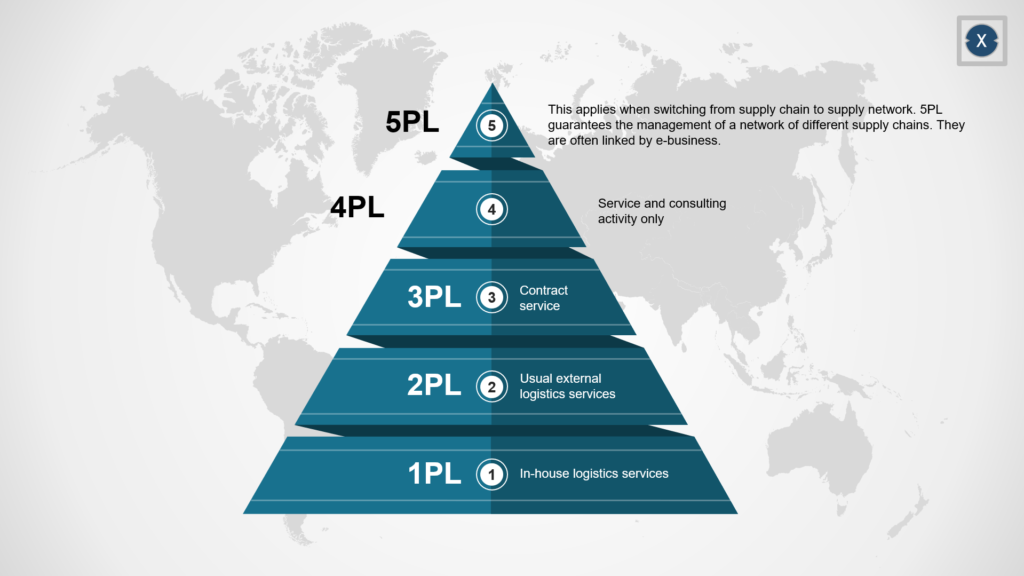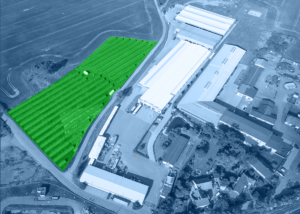SSP – Structure Service Provider: Structure service provider, solar service provider, logistics service provider (4 PL) and O&M (Operation & Maintenance) in one
Language selection 📢
Published on: January 2, 2023 / update from: January 2, 2023 - Author: Konrad Wolfenstein
Efficient Structure Service Services (SSP) – With dynamic solutions

Solar service providers, logistics service providers and O&M (Operation & Maintenance) – Image: Xpert.Digital
What is SSP - Structure Service Provider?
Smart Factory , Smart City , Urbanization , Smart Grid , Smart Energy (Photovoltaics) , Industry 4.0 , IoT and many more are complex disciplines, but with a large overlap with the other areas. However, there is a risk here that the individual specialist areas do not (or cannot) see beyond the boundaries of the others and that necessary interdisciplinary projects are implemented inadequately or fail due to a lack of competence.
This impending discrepancy has already been pointed out in some articles with regard to B2B:
What will be crucial for the future will be how we secure the infrastructure of our key industries!
Three areas are of particular importance here:
- Digital Intelligence (Digital Transformation, Internet Access, Industry 4.0 and Internet of Things)
- Autonomous power supply (CO2 neutrality, planning security, safety for the environment)
- Intralogistics/logistics (full automation, mobility of goods and people)
Structural service providers are the 4PL service providers in logistics AND O&M (Operation & Maintenance) in the solar industry.
This leads to the following questions:
- What is O&M (Operation & Maintenance)?
- What is a 4PL service provider in logistics?
Advantages of O&M - Operation & Maintenance - in photovoltaics
Operation & Maintenance (O&M) is an important component of the solar industry. It is necessary so that solar energy can be used efficiently and investments in photovoltaic systems are protected. O&M service providers offer comprehensive services for the planning, construction and operation of photovoltaic systems. These services are important to extend the life of the system and ensure the quality of the electricity produced.
O&M has many advantages for solar system operators. Some of them are:
1. Reduced Operating Costs: With the right O&M plan, the cost of operating the facility can be minimized. Therefore, investors can earn more profit.
2. Increased efficiency: An O&M plan allows operators to optimize the technical aspects of the plant to maximize their electricity output.
3. Improved security: Regular maintenance ensures that technical problems can be identified early and resolved before they become major problems. This can avoid an unplanned risk of failure.
4. Increased knowledge: O&M service providers help operators learn more about their solar system and offer them insights into the operation and maintenance of the system as well as practical tips for optimizing it.
5. Preserving Value: With the right O&M plan, a solar system can continue to perform well for years to come, ensuring investors get the maximum possible return on their investment.
It is evident that O&M plays a very important role in the operation of a solar system and offers promising benefits - from reduced risk to increased knowledge about the system - it is therefore necessary that solar system operators hire professional O&M service providers to reap the full benefits your photovoltaic system.
4PL Service Provider (Logistics) -What types of logistics service providers are there?
The classification of logistics service providers into different areas can be traced back to a historical development. The range of services and solutions goes beyond the traditional freight forwarding industry: for example, customer-related storage, picking, assembly or invoicing are offered.
The different logistics service providers can be differentiated from one another and from other service companies in numerous, sometimes non-uniform, ways. One possibility is to classify logistics service providers according to their range of services. For example, a distinction can be made between transport, process chain development, supply, order processing including production and distribution, and disposal.
A second, very common way of demarcation is to classify logistics service providers into operational, coordination and strategic services and the use of fixed assets, so-called logistics assets. Providers are referred to as “Service Providers” and are hierarchically divided into areas (“Party Logistics”), starting with First Party Logistics up to Fifth Party Logistics Service Providers.
First Party Logistics Service Provider (1PL)
For decades, logistical processes were mostly handled internally by companies. These companies are part of the First Party Logistics Provider (1PL) segment. Here, a large part of the core logistics activities, the so-called transport, handling or storage services (TUL services), are carried out by the companies themselves. The prerequisite for this is the availability of suitable storage facilities and our own fleet of vehicles, as well as the employees required to carry out the work. However, in times of increasing specialization and the outsourcing of entire areas, this rigid solution has been weakened. The main reason for this is the costs that companies incurred in providing logistics services. With the emergence of large logistics service providers, cooperation partners quickly emerged who were able to offer the required tasks more cheaply and quickly - a main reason why the proportion of companies that handle all logistics internally has continuously fallen since the late 1970s.
1PL concept: This refers to a solution in which companies handle most of their logistics themselves. These only book additional services from external companies in special cases, such as handling international transport.
Second Party Logistics Service Provider (2PL)
With the trend towards outsourcing logistics services to external service providers that began in the 1980s, the industry continued to grow. The main cause was the lean management , in which companies concentrate on their core competencies and look for service providers for downstream processes, including logistics. These companies that offer the above-mentioned TUL services are called Second Party Logistics Service Providers (2PL).
This includes, for example, forwarding companies, storage and handling companies, shipping companies and providers from the CEP industry (operators of courier, express and parcel services), all of which have the necessary resources (warehouses, means of transport, employees).
2PL concept: Clients who do not want to process parts or all of their logistics using their own systems and resources choose the 2PL concept. Here, the required individual and combined services are purchased from various 2PL service providers or provided by them. The aim is to reduce your own logistics costs while at the same time accelerating processes through the companies that specialize in their respective services.
Third Party Logistics Service Provider (3PL)
Third-party logistics providers are external logistics service providers with an overall economic approach. Like 2PL service providers, they have their own infrastructure. However, in contrast to them, 3PL providers handle the entire logistics chain for their customers, and not just individual parts. In addition, 3PL providers take on activities such as returns management or financial and IT services for their customers.
3 PL service providers developed from 2PL service providers to so-called system service providers in the 1990s when they began to take on other activities in addition to organizing the flow of goods and information for their customers. In addition to the pure handling of the goods, customers receive far more intensive support from their service provider. These solution approaches, some of which are highly complex, ensure close cooperation between providers and customers and are usually designed for the long term due to the close integration.
Benefits of using external 3PL providers for businesses:
- Due to the specialization, the providers work much more efficiently and thus ensure that, according to surveys, clients can reduce their logistics costs by an average of 10 percent due to the high cost and time savings, while the delivery time can be shortened by 30 percent.
- In addition, due to the reduced fixed costs in the logistics sector, companies can significantly reduce the capital originally tied up there.
- The increased flexibility with regard to fluctuations in production or demand gives companies greater scope for action.
- Customers benefit from the industry know-how of the logistics service providers. These have usually set up global networks that the customer can use to their advantage.
3PL concept (contract logistics): Clients who want to outsource a large part of their cross-company logistics on a longer-term basis choose the 3PL concept. The aim is to streamline your own processes and hand over the outsourced tasks to an external service provider for a defined period of time. The client and 3PL service provider take care of controlling and management tasks together.
Fourth Party Logistics Service Provider (4PL)
In contrast to 3PL providers, 4PL service providers do not have their own resources in areas such as transport, storage or handling. Instead, 4PL providers make their know-how available to the companies that commission them. For example, a service frequently used by 4PL customers is vehicle fleet management. The core competence of the 4PL service provider lies in the planning and control of logistics processes on the customer side. He is seen as a system integrator who stands between his customers and other logistics service providers to ensure coordination and organization of all business processes within the value chain. In this respect, a 4PL provider acts in the role of a neutral coordinator between the client and the various service providers, striving to optimize the interaction of all those involved as a whole. Due to the complex structure of the processes, which can now only be managed with powerful software and hardware, 4PL providers must have a very well-developed IT structure.
The demand for this concept arose in the course of a further outsourcing effort, the aim of which is to outsource planning and control functions in companies to a fourth, neutral party. This takes over the optimization of the operational logistics chain on behalf of the customer and thus also the selection of 3PL service providers. As a kind of general contractor, the 4PL provider puts together all service components of the logistics chain in a process-optimal manner.
The approach of placing a neutral intermediary between the customer and the 3PL provider has the advantage for the former that the optimal package can be put together across the range of various service providers depending on their requirements.
Fifth Party Logistics Service Provider (5PL)
Providers in this category deal with supply chain management and specialize in offering system-oriented consulting services to their customers. This includes supporting the coordination and expansion of internal supply chains and delivery networks, where the 5PL providers ensure that the complex processes in these networks are managed efficiently. As with 4PL providers, the focus of the service is on advisory work.
'Real' structural service providers are free and independent

Solar service providers, logistics service providers and O&M (Operation & Maintenance) – Image: Xpert.Digital
Structural service providers are not focused, limited or contractually bound to specific manufacturers or products for a project to be planned.
The aim is to be able to offer the best possible and most efficient solution for every project and requirement. The focus of our actions is not on the products for the solution, but on the challenge to be solved.
A structural service provider is a service provider that provides the necessary structures and systems to support an organization. This can include everything from providing office space and IT systems to warehousing and transporting goods. Structural service providers are usually independent of the industry or company they work for and can therefore work for both small companies and large corporations.
The advantages of a structural service provider are obvious: They support an organization in providing its services without having to intervene directly in the company's core area. This means that the organization can concentrate on its core business while the service provider takes care of the tasks at hand. In many cases, this can lead to cost savings, as using external resources is often cheaper than sourcing these resources in-house.
However, there are also some disadvantages to using structural service providers. On the one hand, it is often difficult to find the right service provider who has both the necessary resources and the necessary experience. On the other hand, dependencies can arise if a company becomes too dependent on the services of a particular provider. In such cases, it may be difficult to switch service providers if there are problems or if better offers are available.
Example of structural services in logistics

Solar service providers, logistics service providers and O&M (Operation & Maintenance) – Image: Xpert.Digital
Structural service providers can play an important role in the development, implementation and support of structured logistics processes. They help increase the overall efficiency and effectiveness of the logistics chain. Structural service providers can help increase process efficiency while reducing costs.
For example, structural service providers can help develop an efficient warehousing strategy. They can also help develop an efficient inventory management system and implement it within the company. Such a system can improve production technology and supply chain logistics.
In addition, many structural service providers also offer consulting services. With this advice, companies can optimize their logistics processes and reduce costs at the same time. These consulting services typically include warehouse planning, use of material flow management techniques, transportation concept design, and more.
Some structural service providers also offer technical services, such as implementing an ERP system or developing a customized inventory management system for a specific company. These systems are useful for uncovering logistics cost savings potential and improving process efficiency.
Finally, a good structural service provider also offers training programs to teach its customers how to implement effective logistics processes and how to best use them. This is particularly useful for smaller companies as it allows them to increase their knowledge level and learn new techniques.
Using structural service providers is a great opportunity for companies of all sizes and in all industries to optimize their logistics chain and take advantage of cost savings potential. With the right services, every company can increase its efficiency while identifying and implementing cost savings potential.
📣 Structural service providers for industry, retail and municipalities
Everything from a single source, specially designed for all structural solutions.
🎯 For solar engineers, plumbers, electricians and roofers
Advice and planning including a non-binding cost estimate. We bring you together with strong photovoltaic partners.
- Warehouses, production halls and industrial halls with their own power source from a photovoltaic roof system - Image: NavinTar|Shutterstock.com
- Industrial plant with its own power source from an outdoor photovoltaic system - Image: Peteri|Shutterstock.com
- Plan solar systems with photovoltaic solutions for freight forwarding and contract logistics
- B2B solar systems and photovoltaic solutions & advice
- Plan photovoltaics for warehouses, commercial halls and industrial halls
- Industrial plant: Plan a photovoltaic open-air system or open-space system
- Plan solar systems with photovoltaic solutions for freight forwarding and contract logistics
- B2B solar systems and photovoltaic solutions & advice
That’s why Xpert.Plus for structural planning and advice!
I would be happy to serve as your personal advisor.
You can contact me by filling out the contact form below. I will get back to you right away
I'm looking forward to our joint project.
Xpert.Digital – Konrad Wolfenstein
Xpert.Digital is a hub for industry with a focus on digitalization, mechanical engineering, logistics/intralogistics and photovoltaics.
With our 360° business development solution, we support well-known companies from new business to after sales.
Market intelligence, smarketing, marketing automation, content development, PR, mail campaigns, personalized social media and lead nurturing are part of our digital tools.
You can find out more at: www.xpert.digital – www.xpert.solar – www.xpert.plus






























